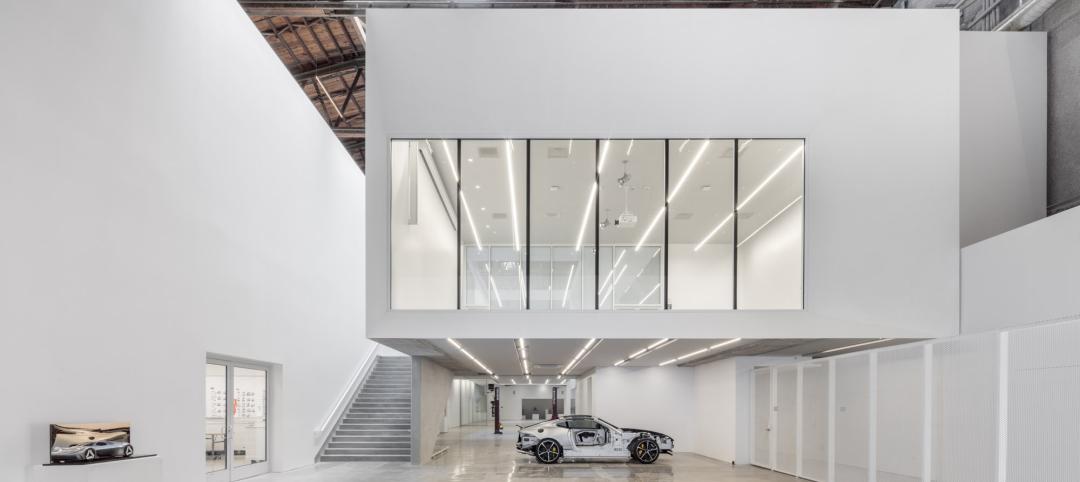The industry’s old-school ways mean contractors waste time and money mailing revisions to blueprints, tracking paper receipts and invoices, or traveling long distances to do on-site inspections of small changes.
95% of construction and engineering professionals think tech/innovation will significantly change their business2.
As construction professionals shoulder even more pressure to boost razor-thin profit margins, leaders are beginning to embrace the digital revolution. Fifty-five percent of construction and engineering professionals said their industry is ripe for disruption in a 2017 global survey conducted by KPMG; 95% think technology/innovation will significantly change their business; and 74% believe such a change will happen in less than five years2.
Digital disruption doesn’t have to be a burden. Here are three ways to harness digital tools to your advantage.

Manage Projects From Anywhere
Hard drives and technology are more visible than ever on the job site. Crews are now using tablets, for example, to review and inspect plans instead of old-fashioned paper blueprints. Some new applications help managers inspect remote sites by providing digital photos.
In addition, project management software can save time and increase transparency by ensuring that updates, revisions and plan changes are shared in real time, cutting down on errors and delays.

Manage Jobs Better On-Site
Increasingly, on-site job leaders are using tech to monitor and improve operations in real-time.
New mobile platforms allow foremen to update blueprints immediately on-site, instead of having to make the trip back to the office. Workers can annotate and track punch lists from the construction zone, letting them work nimbly in the field when inevitable changes on-site arise.
New mobile platforms allow foremen to update blueprints immediately on-site, instead of having to make the trip back to the office.
Being able to adjust or change plans in real-time reduces or eliminates the time-delay that can be a killer on projects. Some digital tools allow foremen to immediately retrieve and compare data on actual project hours, budgeted hours, and remaining hours, which helps keep projects on or close to budget.
Harry, a VP of Operations at a midsize construction firm, said the way that work gets done is definitely changing. “There's not too many contractors that don't have somebody that’s schooled in software,” he said. “Most of them have gotten smart enough to know that that helps.”

Track Expenses, Everywhere, Digitally
Having centralized expense control enables the home office to get a birds-eye view of all the project expenses — even those out-of-state.
Owners of mid-size construction firms say that it helps control expenses when their out-of-state workers are aware that their spending is being reviewed regularly.
Jake, the owner and operations manager for a construction firm that does about $25 million in annual sales on projects in multiple states, said, “We want our guys that are out of state to be aware that we're reviewing what they’re spending.”
Turning to the latest digital solutions helps construction leaders quickly and easily tabulate expenses and other various needs for projects. Additionally, by avoiding paper, expenses don’t fall through the cracks and pile up without your knowledge.
Custom business Credit Card programs allow firms to digitize their invoices, track expenditures and automate payments through online dashboards.
“We know ahead of time what our costs are going to be,” said Robert, president of a mid-sized construction firm. “We break up those costs, allowing our field personnel to make purchases for specific projects, up to a certain amount.”
Custom business Credit Card programs allow firms to digitize their invoices, track expenditures and automate payments through online dashboards.
“When we were looking around, I asked a couple of friends what they were doing as far as controlling their expenses and what they thought was the best way to go,” Robert said. “Most of them are using a combination of corporate cards and online financial management tools to manage their cash flow.”
Related Stories
Modular Building | Aug 13, 2024
Strategies for attainable housing design with modular construction
Urban, market-rate housing that lower-income workers can actually afford is one of our country’s biggest needs. For multifamily designers, this challenge presents several opportunities for creating housing that workers can afford on their salaries.
Energy Efficiency | Aug 9, 2024
Artificial intelligence could help reduce energy consumption by as much as 40% by 2050
Artificial intelligence could help U.S. buildings to significantly reduce energy consumption and carbon emissions, according to a paper by researchers at the Lawrence Berkeley National Laboratory.
Sponsored | Healthcare Facilities | Aug 8, 2024
U.S. healthcare building sector trends and innovations for 2024-2025
As new medicines, treatment regimens, and clinical protocols radically alter the medical world, facilities and building environments in which they take form are similarly evolving rapidly. Innovations and trends related to products, materials, assemblies, and building systems for the U.S. healthcare building sector have opened new avenues for better care delivery. Discussions with leading healthcare architecture, engineering, and construction (AEC) firms and owners-operators offer insights into some of the most promising directions. This course is worth 1.0 AIA/HSW learning unit.
Data Centers | Aug 8, 2024
Global edge data center market to cross $300 billion by 2026, says JLL
Technological megatrends, including IoT and generative AI, will require computing power to be closer to data generation and consumption, fueling growth of edge IT infrastructure, according to a new JLL report.
K-12 Schools | Aug 8, 2024
New K-12 STEM center hosts robotics learning, competitions in Houston suburb
A new K-12 STEM Center in a Houston suburb is the venue for robotics learning and competitions along with education about other STEM subjects. An unused storage building was transformed into a lively space for students to immerse themselves in STEM subjects. Located in Texas City, the ISD Marathon STEM and Robotics Center is the first of its kind in the district.
Products and Materials | Aug 8, 2024
EPA issues $160 million in grants for clean manufacturing of steel, other construction materials
The U.S. Environmental Protection Agency will provide 38 grant recipients with nearly $160 million to support efforts to report and reduce climate pollution from the manufacturing of construction materials and products.
Green | Aug 7, 2024
Major cities worldwide set building performance standards
Cities around the world are setting building performance standards (BPS) as a key measure to cut emissions and meet climate targets, according to a report from JLL.
Architects | Aug 5, 2024
Mastering the art of project schedule: Expert insights on design and construction
We sat down with two experts in the design field, Ron Dick (Founding Partner and Architect) and Mike Niezer (COO and Architect), to talk about everything you need to know about the entire process.
Regulations | Aug 4, 2024
Diversity rules largely ignored on Boston construction projects
Not a single construction project in Boston over the past four years has met all the rules intended to diversify the construction industry and increase the number of city residents working on construction sites, according to a report in the Boston Globe.
Education Facilities | Aug 4, 2024
A former supersonic wind tunnel becomes a new educational facility for transportation design
The Mullin Transportation Design Center at ArtCenter College of Design in Pasadena, Calif., provides access for full-scale vehicular models, replicating a professional design studio.

















